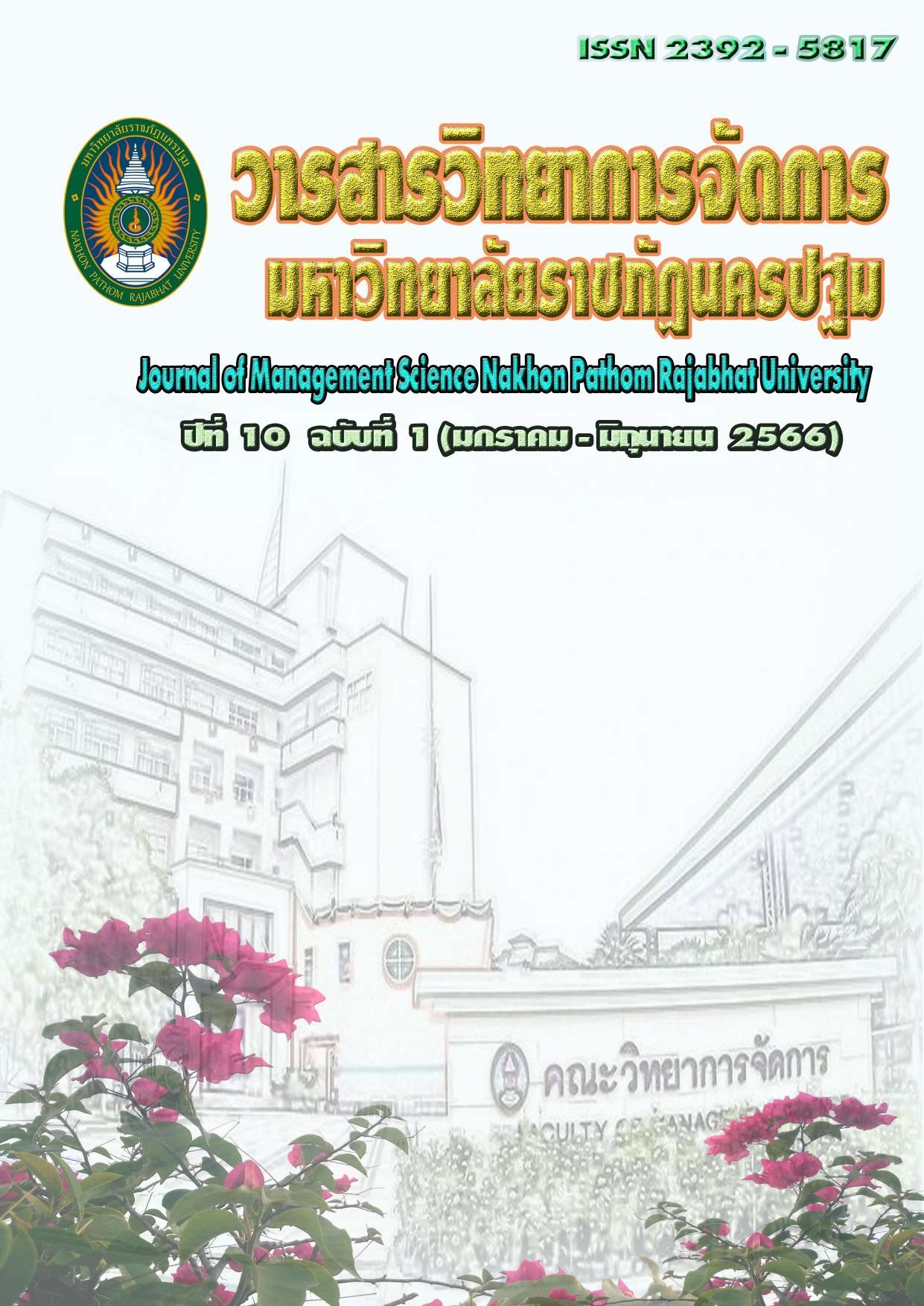Principles of Mindfulness of Stepping into Moral Relationships in the Workplace
Main Article Content
Abstract
The objective of this study is to create a clear understanding of the identity that affects the creation of a culture and to be able to demonstrate the educational results to be evident in the work, building good relationships at work, accessing a good culture. in the organization Expressions, definitions and discussions to present a new and clear concept of value creation in the context of people working in the organization. The art of approaching people, professional presence In working conditions that are different from the synthesis of the work, it shows that Good practice. In approaching, good relations can deliver good results in work, which is considered to create progress in the work culture. It is a realization of their growth. The organization results can understand the behavior of Good relationship people to build cooperation and deal with problems that arise in the organization.
Article history: Received 22 August 2022
Revised 7 February 2023
Accepted 9 February 2023
SIMILARITY INDEX = 0.00 %
Article Details

This work is licensed under a Creative Commons Attribution-NonCommercial-NoDerivatives 4.0 International License.
The views and opinions of the article appearing in this journal are those of the author. It is not considered a view and responsibility of the editorial staff.
References
กุสุมา พูลเฉลิม และ มานพ ชูนิล (2557). พฤติกรรมการใช้เวลาว่างในที่ทำงานและสัมพันธภาพระหว่างเพื่อนร่วมงานที่พยากรณ์ความสุขในการทำงานของบุคลากร. จันทร เกษมสาร, 20(39), 99-108.
ปฐกร ปรีชา และ ศันสนีย์ จะสุวรรณ์ (2564, ). การบริหารความขัดแย้งภายในองค์กร. In Proceeding National and International Conference 2,(14)1191
Anderson, V. (2004) Research Methods in Human Resource Management. CIPD, London.
Bartlett, L., Martin, A., Neil, A. L., Memish, K., Otahal, P., Kilpatrick, M., and Sanderson, K. (2019). A systematic review and meta-analysis of workplace mindfulness training randomized controlled trials. Journal of occupational health psychology, 24(1), 108.
Ben Khaled, W., and Gond, J. P. (2020). How do external regulations shape the design of ethical tools in organizations? An open polity and sociology of compliance perspective. Human relations, 73(5), 653-681.
Becke, G. (2014). Human-resources mindfulness. In Sustainability and human resource management Springer, Berlin, Heidelberg.
Decuypere, A., Audenaert, M., and Decramer, A. (2020). Leader mindfulness: Well-being throughout the organization. The Palgrave handbook of workplace well-being,
Glomb, T. M., Duffy, M. K., Bono, J. E., and Yang, T. (2011). Mindfulness at work. In Research in personnel and human resources management. Emerald Group Publishing Limited.
Glomb, T.M., Duffy, M.K., Bono, J.E. and Yang, T. (2011), "Mindfulness at Work", Joshi, A., Liao, H. and Martocchio, J.J. (Ed.) Research in Personnel and Human Resources Management (Research in Personnel and Human Resources Management, Emerald Group Publishing Limited, Bingley,(30)115-157.
Hick, S. F. (2009). Mindfulness and social work. Oxford University Press.
Islam, G., Holm, M., and Karjalainen, M. (2022). Sign of the times: Workplace mindfulness as an empty signifier. Organization, 29(1), 3–29.
Marx, K. (1967) Writings of the young Marx on philosophy and society. Hackett Publishing.
Niemiec, R. M. (2013). Mindfulness and character strengths. Hogrefe Publishing.
Pattnaik, L., and Jena, L. K. (2020). Mindfulness, remote engagement and employee morale: conceptual analysis to address the “new normal”. International Journal of Organizational Analysis.29 (4).
Sajjad, A., and Shahbaz, W. (2020) Mindfulness and Social Sustainability: An Integrative Review. Soc Indic Res (150)73–94
Saraç, M. (2020). A literature review on mindfulness at work places: Conceptualization, measurement, and outcomes. Handbook of research on positive organizational behavior for improved workplace performance, 55-71
Shahbaz, W., and Parker, J. (2021). Workplace mindfulness: An integrative review of antecedents, mediators, and moderators. Human Resource Management Review, 100849.
Siegel, R. D., Germer, C. K., and Olendzki, A. (2009). Mindfulness: What is it? Where did it come from?. In Clinical handbook of mindfulness, Springer, New York, NY.
Steel, R. P., and Lounsbury, J. W. (2009). Turnover process models: Review and synthesis of a conceptual literature. Human Resource Management Review, 19(4), 271-282.
Thomas, D. C. (2006). Domain and development of cultural intelligence: The importance of mindfulness. Group and Organization Management, 31(1), 78-99.
Vu, T. V., Vo‐Thanh, T., Chi, H., Nguyen, N. P., Nguyen, D. V., and Zaman, M. (2022). The role of perceived workplace safety practices and mindfulness in maintaining calm in employees during times of crisis. Human Resource Management, 61(3), 315-333.
Zheng, X., Ni, D., Liu, X., and Liang, L. H. (2022). Workplace Mindfulness: Multidimensional Model, Scale Development and Validation. Journal of Business and Psychology, 1-25.


